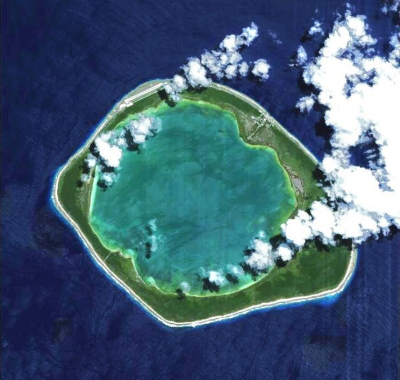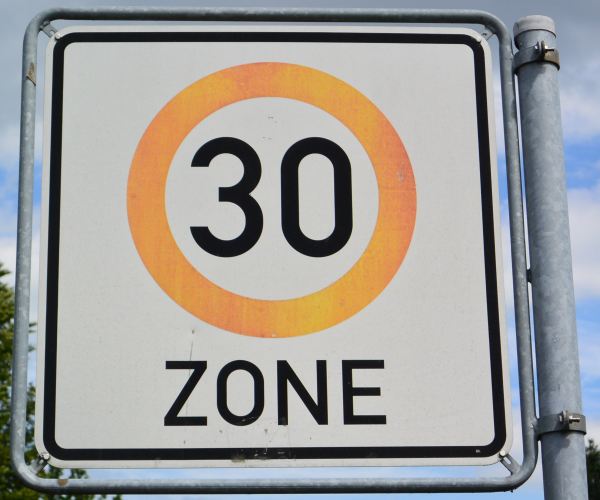4. الامتصاص والتشتت
What does the absorption of light evoke?
Light is absorbed to different amounts in gases, liquids and solid matter. Absorption is a conversion of the light's energy into other forms of energy (in most cases into heat). Absorption is dependent on the wavelength. Satellite images are mostly influenced by the absorbing features of the shown object: The progression and the amount of spectral absorption assigns the colour and the brightness of the earth's surface.

Source: ESA
Seawater absorbs yellow and red light. Therefore it appears to be blue. Due to the blue and red light absorbing vegetation on the island, it appears to be green. The Lagoon seems to be turquoise by the slightly visible vegetation of the sea ground. Clouds such as the reef's edge appear to be white because they absorb only view of the visible wavelengths. The colours in that we see our world are produced by spectrally selective absorption.
Absorption can cause fluorescence and phosphorescence. It evokes chemical reactions such as photosyntheses of plants, where the absorbed light is used for the production of sugar and other organic tissues. A negative side of absorption is shown in the image below: It can cause bleaching of colours. Many red colours bleach very fast when exposed to sunlight. Red colours reflect the red part of the sunlight spectrum and absorb the blue and green. Photons of the blue and green part of the spectrum have high energy so that they are able to degrade colour pigments. Great damage is wreaked by the energy-rich photons of UV-radiation which harms our skin's health through sunburn.
Many gases and liquids are non-absorbing in the visible spectrum so that they are transparent for the human eye. So does water and water vapour. When exposed to ultraviolet or infrared light, water absorbs to a high degree. Nitrogen and oxygen, which are main parts of the air, are translucent at those wavelengths. Ozone (O3) absorbs parts of the ultraviolet wavelengths in the atmosphere so that we are protected from the otherwise very dangerous sunlight. Carbon dioxide (CO2) is absorbing in the infrared. Due to this property, it causes the atmospheric greenhouse effect.
In this section ...
- ... are we dealing with the physical principles that come into play for absorption and we will derive equations to calculate it
- ... will we learn to measure and understand absorption data, and to assemble a setup for these measurements on our own
- ... will we explore how to determine the concentration of an absorbing matter from the derived data.

